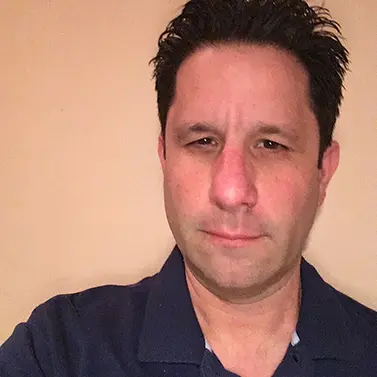Universities invest a lot of time and money into recruiting the best athletes for their sports teams. What happens when one of those athletes gets hurt at practice or during a game? Who is responsible? The factors determining who is liable for sports-related injuries or other accidents on a university campus can be very complicated. Read the responses from our panel of experts below.

Mitchell J. Panter
Mitchell J. Panter is Board Certified as a Civil Trial Lawyer by the Florida Bar and National Board of Trial Advocacy, primarily practicing in the areas of Personal Injury, Wrongful Death, Product Liability, Sexual Assault, Food Contamination, and Premises Liability Cases. Mitchell Panter is also Board Certified by the National Board of Trial Advocacy in Civil Trial Advocacy since 1996.
University has the legal obligation to provide a safe environment
A University like any other property owner and the supervisory entity has the legal obligation to provide athletes and others with a safe environment. Safety should be paramount for all student activities. This extends to the playing field, gym, classroom settings, as well as the activity itself. For example, the playing fields must be well maintained and free of defects. We have had many cases where students were injured on a school field due to poor maintenance including, unknown and obscured holes in the ground. Sprinkler systems can create a dangerous condition with sprinkler heads, water holes in the ground, as well as failure to properly maintain the field and system.
In a gym, there must be supervision for the student-athletes who are training. The equipment must be well-maintained and in good working order. On a playing field, the activity itself must be organized and secured to protect the athletes. If the activity itself creates a dangerous condition, that danger should be minimized with protective gear, guidance, and supervision. The teachers, trainers, coaches, and other personnel should be well-trained, properly screened, and adequately prepared to help the athletes. Recently, we have heard about sexual abuse from athletic personnel. This is unacceptable, inexcusable, and liability should and will extend to the upper levels of the University to prevent such actions.
The University should and will be held accountable when they know or should know about a dangerous condition or situation. If the student-athlete is hurt on school grounds, the University has the duty and responsibility to make sure that the grounds were well maintained and that any dangerous condition is removed or at least a warning exists to alert the students about the condition.
If the University does not adequately protect the student from the dangerous condition or event, they will be held accountable. If a rogue teacher, trainer, or coach causes a student to be injured, we would look to the University to see what precautions were taken in hiring, retaining, and supervising the personnel. If the University knew or should have known of the problem, then they should be held accountable for such negligence. If a University puts dollars above student safety, then they will be held accountable. Again, the number one priority for student-athletes should be safety.
Each state has different laws
It’s important to remember that each state has different laws and standards for tort liability. In general, a property owner is liable for negligently, recklessly, or intentionally maintaining a dangerous condition on the property. Therefore, if a student is walking and falls into an open manhole on campus that was left there by the University, this would likely be actionable in tort regardless of the status of the student as an athlete.
[Speaking of] liability for student-athletes that are hurt while engaging in their sport, it is much more difficult to sustain liability for one primary reason – the assumption of risk. Courts have reasoned that “[t]he difficulty in applying. . . principles of negligence to sports is that risk of inadvertent harm is often built into the sport.” Thompson v. McNeil, 559 N.E.2d at 707. In essence, the assumption of risk is a concept in the law that excuses someone from liability because the injured party had knowledge, comprehension, and appreciation of the risks involved. The implementation of the assumption of risk has been used widely in sports-related injuries, and in many ways, is responsible for the wide proliferation of sports in America. For example, a consenting participant of tackle football would be expected under the law to understand that tackling would occur and could lead to harm. However, suffice it to say, there may still be recourse for student-athletes injured while playing a sport if it can be shown that the risk was so remote or unexpected that they were unable to know, comprehend, and appreciate that risk.

Dennis E. Sawan
Dennis E. Sawan is the managing partner of Sawan & Sawan, an Ohio based personal injury, civil litigation, and insurance law firm with lawyers licensed to practice in Ohio, Michigan, Florida, and Georgia.

Ms. Tina Willis
Ms. Tina Willis handles serious injury, accident & death cases in Orlando, Florida. She is a former law professor and big firm defense lawyer, who fights hard to recover every penny her clients deserve. Find her at Orlando personal injury lawyer.
Unless something on the university property
Finding the person or entity responsible when an athlete voluntarily plays sports is not easy, regardless of where the injury occurs. The reason is that an athlete playing sports voluntarily assumes some legal risk when they decide to play sports.
However, lawyers will fight harder in more serious injury (or death) cases. They might hire an expert if there is any reasonable argument that another person or entity might have contributed to the harm. We are less likely to fight harder and hire experts in less serious injury cases because the time and expense isn’t justified.
For example, if an athlete were practicing in the Florida heat for hours without enough hydration and they suffered a heat stroke or death, this would be different than an athlete who was hit on the field and suffered a concussion during normal play. It would be harder to argue that anyone, other than the athlete himself, [who decided] to play the game, was primarily responsible.
In those cases which might be viable, we still must consider whether the university is public or private. For public (state) schools, at least in Florida, there is a statute, which gives state entities considerable protection from lawsuits, with caps on both damages and attorneys’ fees. That (terribly unfair) law often means that we decline cases against potential state entities because the time and expense of the lawsuit aren’t justified, considering the caps and limits on fees. If the school is private, then we would be much more likely to file a lawsuit if there were a reasonable argument that someone else was to blame (like the coach requiring practice in the heat without hydration, in the example above.)
The bottom line is that every injury case is extremely fact-specific. Also, we never evaluate whether someone technically has a claim under the law. Instead, we evaluate whether filing a suit would make financial sense, considering evidence and legal proof requirements based on the unique facts of every case. This distinction really matters because if you can’t find a personal injury lawyer to accept your case, then you have no remedy, regardless of what the law technically allows.
If the issue were an athlete being injured in some other way on university grounds, like being the victim of a crime in a parking lot after the game. Then, the issue would be whether the university had negligent security measures, which contributed to the crime happening. Or if the athlete was injured in a car accident on university grounds. The potential defendant would be the driver of the vehicle, not the university, unless something on the university property, and under the university’s control, arguably contributed to the accident, such as dangerous road construction.
Depends upon the facts
Who should be accountable depends upon the facts. It is a well-established principle that just because someone gets hurt does not mean it’s another’s fault or the injured person is entitled to compensation.
Did the student-athlete get injured [due to] a risk inherent in the sport? Did he get injured while making a legal tackle? That is determined to be a risk inherent in the sport. Did the athlete get hurt outside of his sport? For example, [did he step] into a hole in the pavement? Was he intoxicated? [This] example is probably the student-athlete’s own fault.
The good news is that at least for medical bills, the university has insurance for the student-athletes to receive medical care for their injuries.

Stephen D. Phillips
Stephen D. Phillips is the managing partner at Phillips Law Offices in Chicago. He earned his Juris Doctor from Loyola University in 1985 and his B.A. from the University of Iowa in 1981.

David Reischer, Esq.,
David Reischer, Esq., Attorney & CEO of LegalAdvice.com
Depend on the nature of the accident
The liability of the university in the case of a student-athlete getting hurt on university grounds will depend on the nature of the accident. A student that is injured because of the fault of the university may have a viable cause of action against the university. The fact of the matter is that the strength of the claim will depend upon the nature of the incident.
An athlete that is injured because of a twisted ankle or other such injuries that is not the responsibility of the university will have a weak cause of action. On the other hand, an athlete that is injured due to negligence of the university will have a much stronger claim. It is also important to assess the duty of care of the university owed to the athlete after an accident takes place to make sure that there is proper medical staff on call to tend to the injured athlete.
This is a crowdsourced article. Contributors' statements do not necessarily reflect the opinion of this website, other people, businesses, or other contributors.
